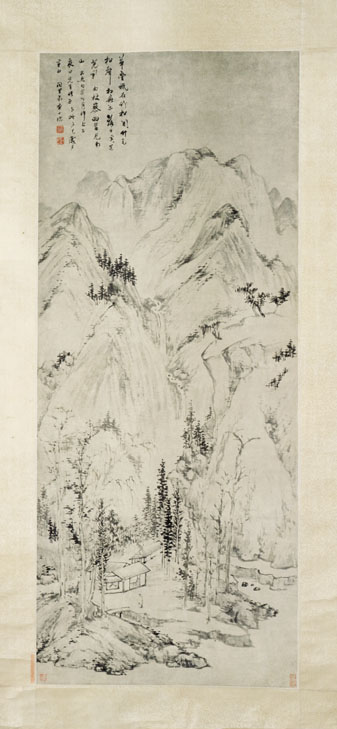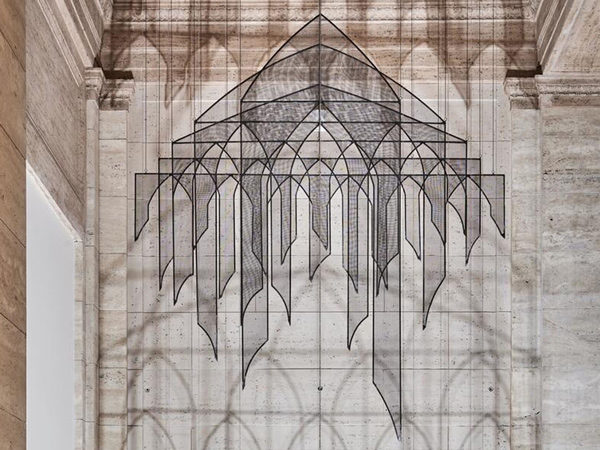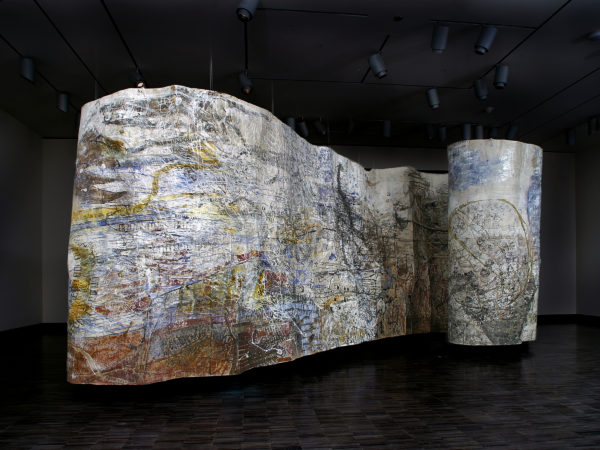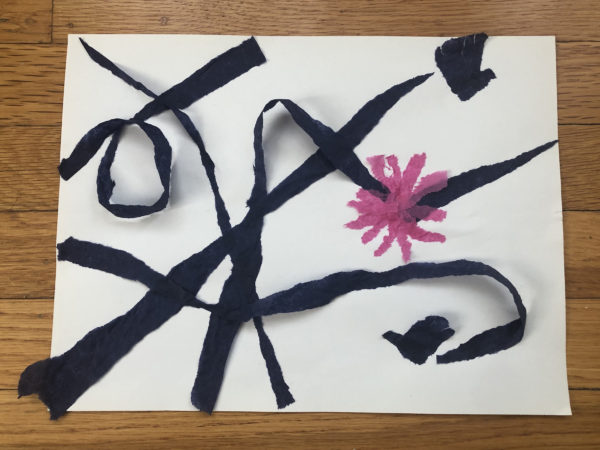Activity
Formats of Chinese Painting

Landscape.
Wall paintings: In Chinese temples, palaces, and tombs, interior and some exterior walls were often finished with very fine clay, which was then decorated with paintings. Because of such factors as political upheaval and the effects of natural forces, wall paintings survive in relatively small numbers.
Screens: A common painting format for much of China’s history. Screens consisted of a single painting or multiple panels. For a number of reasons, few screens have survived in their original form: they were difficult to store, were on display for long periods of time, were discarded with changes in fashion, or suffered fates similar to those of wall paintings. Some screens, however, have been remounted and preserved as hanging scrolls.
Hanging scrolls: The majority of large-scale Chinese paintings survive as hanging scrolls. Created singly, in pairs, and occasionally in large sets, these paintings were displayed only for short periods of time. They were often hung to honor the season, or some festive event, a guest or patron. The rest of the time they were rolled up for storage, allowing fragile works on paper and silk to survive for a thousand years or more.
Handscrolls: Paintings in a horizontal format, meant to be viewed by an individual or a small group. Among the more intimate formats of Chinese painting, they were unrolled from right to left in lengths that one person could hold comfortably. Owners of handscrolls could add sections as needed to either side of an original painting or calligraphy, in which comments (called colophons) were added, such as words of appreciation. Personal seals added a further dimension and an element of bright color.
Albums: A collection of multiple leaves (pages) of approximately the same size. Each leaf is a painting that can stand on its own but is usually related to the other leaves. For convenience of storage and display, collectors sometimes combined groups of otherwise unrelated paintings into an album.
Fans: Small hand-held paper or silk fans often painted in an informal or even playful fashion. Many were painted by famous artists or professional painters for presentation as gifts on auspicious occasions. Many fans were preserved by being mounted in albums or on hanging scrolls.







